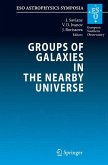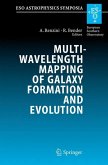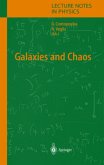The evolution in the form and structure of galaxies which has taken place since the universe was in its infancy is one of the most closely studied by astrophysicists and cosmologists today. It has profound implications for our understanding of how the universe itself has evolved over the past 12 billion years or so. This book will discuss the evolution of galaxies in detail, emphasising the boundaries of our knowledge about the most distant galaxies, but demonstrating how it is possible to make important comparisons between nearby galaxies and the most distant current observed. The author will also review galaxy morphology and its likely (but as yet unproven) history.
An Astronomical Life - Observing the Depths of the Universe" Though science as a subject can be di?cult, what has been more important for me is that its practice can also be rewarding fun! This book is crafted to expose the reader to the excitement of modern observational cosmology through the study of galaxy evolution over space and cosmic time. Recent extragalactic research has led to many rapid advances in the ?eld. Even a suitable skeptic of certain pronouncements about the age and structure of the Universe should be pleased with the large steps that have been taken in furthering our understanding of the Universe since the early 1990's. My personal involvement in galaxy research goes back to the 1960's. At that point, galaxies were easily recognized and partially understood as organized c- lections of stars and gas. What their masses were presented a problem, which I supposed would just fade away. But fade it didn't. Distant active nuclei and quasars were discovered in the mid-1960's. A c- mon view of QSOs was that they have large redshifts, but what use are they for cosmology or normal galaxy astrophysics? I shared that conclusion. My expec- tions fell below their potential utility. In short, the Universe of our expectations rarely matches the Universe as it is discovered.
An Astronomical Life - Observing the Depths of the Universe" Though science as a subject can be di?cult, what has been more important for me is that its practice can also be rewarding fun! This book is crafted to expose the reader to the excitement of modern observational cosmology through the study of galaxy evolution over space and cosmic time. Recent extragalactic research has led to many rapid advances in the ?eld. Even a suitable skeptic of certain pronouncements about the age and structure of the Universe should be pleased with the large steps that have been taken in furthering our understanding of the Universe since the early 1990's. My personal involvement in galaxy research goes back to the 1960's. At that point, galaxies were easily recognized and partially understood as organized c- lections of stars and gas. What their masses were presented a problem, which I supposed would just fade away. But fade it didn't. Distant active nuclei and quasars were discovered in the mid-1960's. A c- mon view of QSOs was that they have large redshifts, but what use are they for cosmology or normal galaxy astrophysics? I shared that conclusion. My expec- tions fell below their potential utility. In short, the Universe of our expectations rarely matches the Universe as it is discovered.








